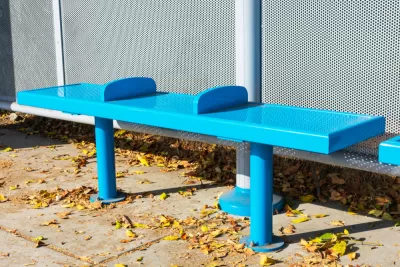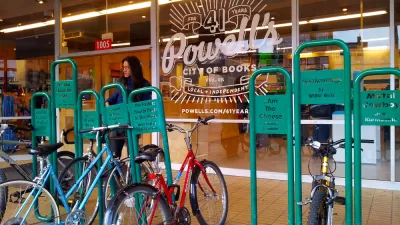‘Defensive urbanism’ interventions explicitly seek to repel certain, often vulnerable, social groups from public spaces.

In an article for Canadian Architect, Pamela Young highlights the work of Cara Chellew, a researcher who documents “hostile design,” defined as “urban interventions that restrict behaviour, defending spaces against unwanted occupation by skateboarders and unhoused people.”
Based on the work of British artist Stuart Semple, the concept of “hostile design,” also known as defensive urbanism, calls attention to the elements of urban design that aim to make ostensibly public space unwelcoming to certain populations. Chellew’s research maps defensive urbanism examples in Toronto. In addition to physical elements that aim to repel “loiterers,” Chellew also includes “ghost amenities” that no longer exist: “Permanently out-of-service drinking fountains, locked or non-existent park washrooms, and ‘shade structures’ that filter sunlight but let rain flood through all have an impact on how shared outdoor space can be used—and who uses it.”
Researchers like Chellew and Nadia Galati, a principal at PROCESS, argue that designing cities for the most vulnerable groups creates more accessible and pleasant public spaces for everyone. Galati recommends implementing a paid community engagement process for new parks and public space projects, whereby residents are paid for their participation in order to attract more input from underrepresented groups.
FULL STORY: Don’t Get Defensive

Alabama: Trump Terminates Settlements for Black Communities Harmed By Raw Sewage
Trump deemed the landmark civil rights agreement “illegal DEI and environmental justice policy.”

Planetizen Federal Action Tracker
A weekly monitor of how Trump’s orders and actions are impacting planners and planning in America.

Why Should We Subsidize Public Transportation?
Many public transit agencies face financial stress due to rising costs, declining fare revenue, and declining subsidies. Transit advocates must provide a strong business case for increasing public transit funding.

Understanding Road Diets
An explainer from Momentum highlights the advantages of reducing vehicle lanes in favor of more bike, transit, and pedestrian infrastructure.

New California Law Regulates Warehouse Pollution
A new law tightens building and emissions regulations for large distribution warehouses to mitigate air pollution and traffic in surrounding communities.

Phoenix Announces Opening Date for Light Rail Extension
The South Central extension will connect South Phoenix to downtown and other major hubs starting on June 7.
Urban Design for Planners 1: Software Tools
This six-course series explores essential urban design concepts using open source software and equips planners with the tools they need to participate fully in the urban design process.
Planning for Universal Design
Learn the tools for implementing Universal Design in planning regulations.
Caltrans
Smith Gee Studio
Institute for Housing and Urban Development Studies (IHS)
City of Grandview
Harvard GSD Executive Education
Toledo-Lucas County Plan Commissions
Salt Lake City
NYU Wagner Graduate School of Public Service





























